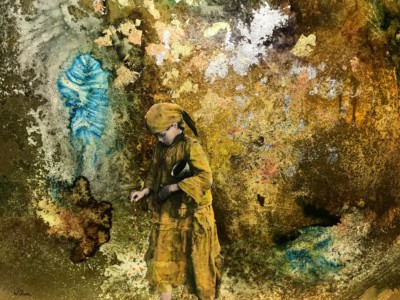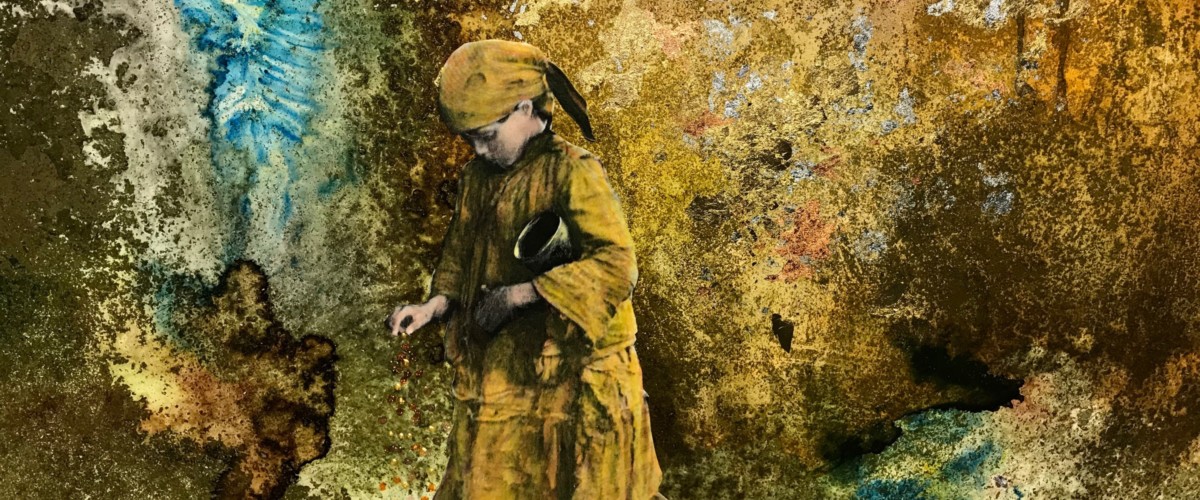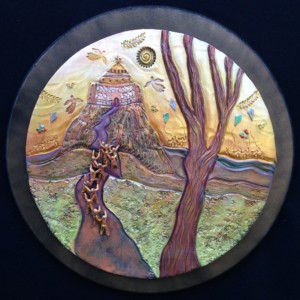Having taught creativity for 40 years on the collegiate level, I have been able to amass a wealth of information. The actual study of creativity didn’t even begin until the early 19th century with the rise of psychology and its study of the workings of the human mind. You won’t find literature on creativity much before that. So understanding the mechanics of the creative process is still a work in progress, but we now do know quite a bit about it.
In this post and the next post, I will be explaining some things about the creative mind and the creative personality. When I used to teach, I would have students ask me how the “specialists” came up with these theories. I told them it was quite simple; they studied thousands of highly creative individuals and discovered that there were certain qualities that they all had in common that were not found in abundance in people who did not demonstrate much creative output. So in this and the next post, we will explore 1. The qualities of the creative mind and 2. The characteristics of the creative personality.
I would like to explore in this post the 8 personal qualities of the creative mind. As I begin, I should state that a creative person may not have all of these qualities, but they will have most. If you don’t see yourself as having many of these qualities, don’t despair. We can always change the way we think with practice; in fact, this is our goal. Many of my students came into my class being devoid of these thinking patterns, but at the end of 15 weeks, almost every one of them had totally changed their ways of thinking.
So let’s begin.
Tolerance of Ambiguity
By far, the most important mental quality that one needs to be creative is tolerance of ambiguity. In fact, without this ability, creativity is almost impossible and the remaining 7 mental qualities will not be of any use. This is the key quality to which all the others contribute. What does this mean? An ambiguous situation is one in which you have no framework to help direct decisions and actions. As an example, when you travel to a country that is completely foreign to you, is that exciting or scary? When you are confronted with a menu of foreign foods that you know nothing about, is this an adventure to you, or would it be something to dread? A person who has the ability to remain open-minded in the face of ambiguity and strangeness is demonstrating a hallmark of the creative mind because it implies an openness to the world.
I can remember taking college students to Europe in our study abroad program, and it always stunned me how many of my students would not even try foods from other countries. They would whine and ask if there was a McDonald’s somewhere. On our first trip to Paris, we were eating at a wonderful Lebanese restaurant with gourmet meals, and I was sitting at a table with 5 girls who would not even try the food. Even when they brought out an entire tray of French pastries for dessert, they turned up their noses and wouldn’t try even one!
Strangeness to these gals terrified them, and there was no interest in experiencing new things. After 3 weeks in Europe, I overheard one girl say to a friend, “My boyfriend promised me that when we get home, I will never have to eat strange foods again!” Needless to say, with this type of attitude and mindset, she will most likely never enter into the ranks of the creative.
On the first night of my creativity class, before the students really knew anyone in the class or even know me, I gave them an assignment to make an alligator out of paper and string and to bring it to class the next week. I told them we would spend the first hour discussing them and that it was very important. I also told them that I would not answer any questions that they might have about the assignment. It amused me to see the panic in many of their eyes. But what I was doing was giving them an assignment that was intentionally ambiguous to see how they would respond.
This was a painless test that was going to reveal to them what their strengths and weaknesses were. As I move on, you will see how brilliant this was, but the first thing I wanted them to discover about themselves was their approach to a problem that was ambiguous. The first question I asked them the following week was how they felt about the project. At least two-thirds of the students stressed over the assignment because they didn’t understand the rules, whereas the other third thought it was incredibly exciting. They were learning!
Stimulus Freedom
The second quality is something called stimulus freedom. The simple explanation for this would be the willingness to color outside of the lines. A stimulus free person does not assume that rules exist when a situation is ambiguous. The opposite of this would be the stimulus bound person. This individual follows rules religiously and, when faced with ambiguity, is likely to assume nonexistent directions in order to alleviate their fear of being wrong. Fear is undoubtedly one of the most effective inhibitors of creativity.
Being stimulus free seems to be a difficult problem for religious people. Because the religious spirit thrives on obeying the rules, many Christians find “openness to the world” to be threatening. But openness to the world doesn’t mean openness to sin but, rather, to a healthy sense of adventure and curiosity. In churches that are highly structured, creativity is often stifled because everything has to be approved by those that are spiritually over them.
This is also true in large companies. Often, management will give lip service to wanting creativity in the workplace but only as long as you don’t rock the boat. Many people that homeschool their children often thrive on rules in the name of discipline, obedience, and structure. This, of course, is a broad, general statement. But what it boils down to in the end is the parent. If the parents value adventure and exploration, they will pass this on to their child. But if the parents are fearful and rule-follower themselves, that is what will be passed on. As someone has stated, values are caught, not taught.
Now back to the alligator out of paper and string assignment. When the students returned to the second class with their “alligators,” the first question I asked them was, “How many of you only used paper and string?”About half of the class raised their hands.I asked them, “Why?”“Because that is what you said,” they would reply.
Then I would point out that I never said they couldn’t use other materials. But the students that were stimulus bound all assumed there were rules because my original assignment was intentionally ambiguous. I also asked them why, since they were unsure of the rules, they didn’t take a chance? Their answer was invariably because they were afraid of being wrong. Once again, they were learning something about themselves that they didn’t know before.
Functional Freedom
The next category is called functional freedom. This is the ability to find purposes and functions for items other than their intended purpose .For instance, what is a golf ball used for? Obviously, to play golf. But they could also be used as ball bearings to put under heavy appliances to move them easily across the floor. The opposite of functional freedom is functional fixedness. This is the inability to imagine new ideas or uses for objects.
One of the earliest class assignments I gave to my creativity classes was to pass around a common brick. As each student held the brick, they had to come up with a use for it, but once a use was mentioned, it could not be used again. Oh, the horror! Such fear. I usually had 25 students in a class, and the ones that would be last were sweating bullets. Then, when we got to the end, they had to pass it back doing the same thing again. This was also an exercise in divergent thinking. Some students would hold the brick for 3 or 4 minutes and would almost start crying because they couldn’t think of anything. At this point, I always gave them a hint. So whoever is reading this, stop for a moment and see if you can come up with at least 25-35 uses for a common brick. Once again, tolerance of ambiguity is needed.
Flexibility
The fourth quality of the creative mind is flexibility. This describes the ability to see the whole of a situation before focusing on the individual parts. I call this the ability to see a problem from a higher altitude, seeing the forest before we focus on the trees. When I taught this concept, I used an image of a clown kneeling and looking at his reflection in a pond. I then told the class to ask any question they wanted to about this picture. The typical responses were usually things like, “Why is he looking into the water?” “Why is he wearing that outfit?” “Did he drop something?” “Is he thirsty, and is he getting a drink?” In every case, they were responding only to what they saw, the particulars of the picture.
But occasionally, I would get a question like, “What did his parents do for a living?” “What city did he live in?” “Did he have siblings?” In these instances, the students were looking beyond the immediate information that they saw; they were looking at a much broader picture trying to get a wider understanding before they focused on the individual parts.
An example of this from one of my students doing the alligator-out-of-paper-and-string project was the lad who went to a pet store and rented a live baby alligator and put it in a box with a small tubular hut that he made out of toilet paper and string. When he opened the box, the little gator came crawling out of his tubular home. That took a flexible mindset! True flexibility in thinking is an uncommon quality. Tolerance of ambiguity is once again needed to think this way.

Taking a Risk
The fifth quality is risk-taking. Most people assume that truly creative people would be massive risk-takers. Although there may be occasional examples of this, the truth is that most creative people have a tendency to take “moderate” risks. Remember the ring toss games you used to play at Chucky Cheese when you were a kid? So what number would creatives go for? The ones that are really close and easy or the tens that are farthest away and difficult?
Surprisingly, most high creatives tended towards the 5-7 range. Why? Because those were the most likely to achieve and still get a high score. Think about it. If you’ve come up with a good idea and then bet the whole farm on its success, if it doesn’t pan out, you are now broke and often ruined. Creatives are willing to take risks, but moderate ones make more sense. If it doesn’t work on the first try, you’re not broke and can continue to improve your product to try again.
I had a friend when I was younger who was an artist but who was living hand to mouth with his family, just struggling to get by. At one point, he got the bright idea to make a fortune by selling his wife’s calligraphy of inspirational sayings to Christian bookstores, but he couldn’t afford the frames. As fate would have it, he received a small inheritance of about $4,000 from a deceased relative. So he told me about his idea and how he would use the entire $4,000 to buy small frames.
I suggested that he perhaps start out with a dozen frames and test the market with them. But he was sure his plan would work, so he took the big risk and spent the entire inheritance on frames. He never sold one. I talked to his son years later and told him about this episode, and he said, “Oh, I always wondered why we had so many frames around the house.” Big risks can be fatal. Moderate risk-taking also requires a tolerance for ambiguity.
Preference for Disorder
The sixth quality is preference for disorder. It seems that creative people enjoy the challenge of bringing order out of disorder as long as it is their own disorder. As an artist myself, I find that disorder breeds ideas. The chaos in my studio allows me to find ideas in unexpected places. When I worked in clay, I would be searching for something that would give the piece I was working on an unusual look. Many times, I would simply look around my studio and accidentally spot something that would make a great textural imprint or a shape on a random object that would inspire the shape of the vessel I was working on.
Most of the working artists that I know work in a chaotic studio because they are working with ideas. But with craftsmen, it is the opposite. Their studios are usually very orderly and clean because their concern is with technique rather than ideas. Both are valid. Craftsmen make their changes in small increments, whereas artists usually discover changes with big intuitive leaps. To live in chaos requires tolerance of ambiguity.
Delay of Gratification
The seventh quality of the creative mind is delay of gratification.This means the willingness to endure the stress of prolonged effort so as to reap higher pleasures in the end.Perhaps another way of saying this is having the patience to endure.When I would discuss this with my classes which were predominantly 19-25-year-old students, I discovered that this was, by their own admission, a difficult concept for them.Growing up with fast food, the internet, and the demands of instant gratification that this age places on them, the idea of being patient was a struggle for many of them.
I grew up in the ’50s where I was told that if I worked hard and was steadfast, I could realize my dreams. But time marches on, and the world shifted. This is the “now” generation. It has become the age of entitlement. As one of my students told me, “Why should I go to school and learn anything? I’ll just look it up on Google or ask Alexa or Siri. As for the future, maybe I’ll just get a YouTube hit.” With a worldview like that, it is no wonder that so many of my students struggled with becoming creative.
Once again, this creative mindset requires the tolerance for ambiguity.
Androgyny
Our last creative mental concept is called androgyny. It seems that creative people are in touch with their “opposite gender” side. Androgyny means having both masculine and feminine qualities that are not suppressed but are paid attention to. This has nothing to do with sexual preferences or being gay. Everyone has a masculine and feminine side within them.
For example, a rugged outdoorsman may at times weep over the beauty that he sees in nature or may be a kind caregiver to his pets. A petite, feminine woman might also have the ability to be a firm disciplinarian or a strong leader. The opposite of this would be to be a “macho man” or a “Scarlet O’Hara.” Rigid sex roles are costly to the creative personality—it is a form of functional fixedness.
So there you have it. If a person wants to begin to increase their creative production, it will be necessary to develop as many of these mental attitudes as possible. It isn’t hard. As I mentioned earlier, year after year, I watched as my students came into my class demonstrating very few of these qualities, but 15 weeks later, almost all of them were practicing creative thinking easily just by understanding and shifting the way that they looked at the world.
Featured and In-Text Images painted by Gary Wilson















[…] my last post, I talked about the 8 qualities of the creative mind. In this post, I will add the second part and will talk about the creative personality. I am taking […]